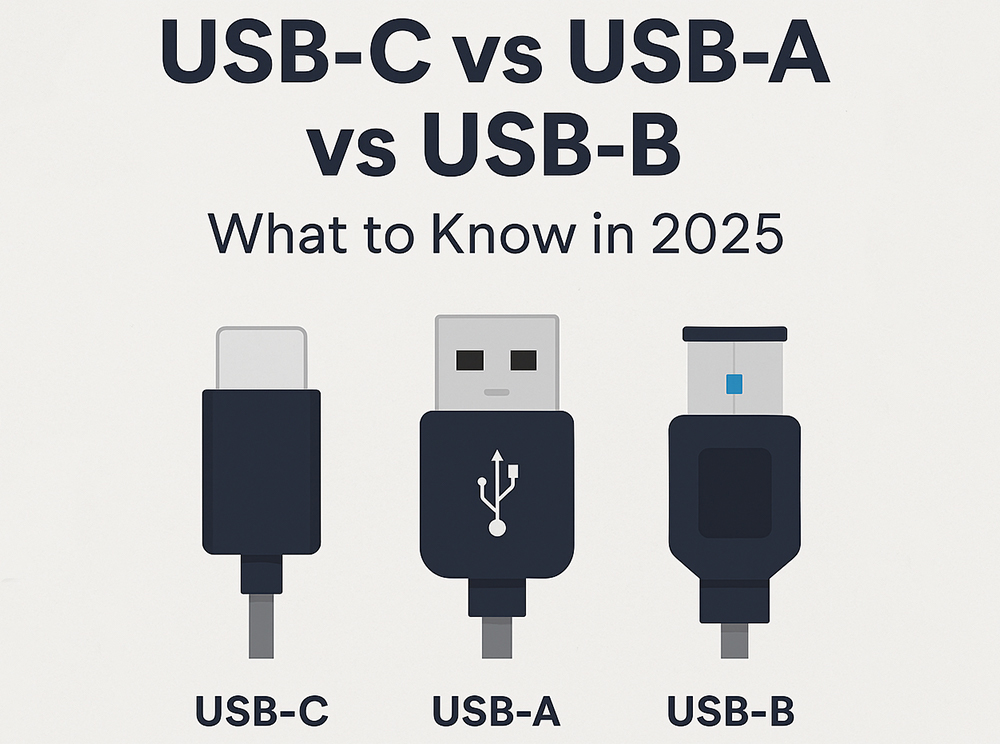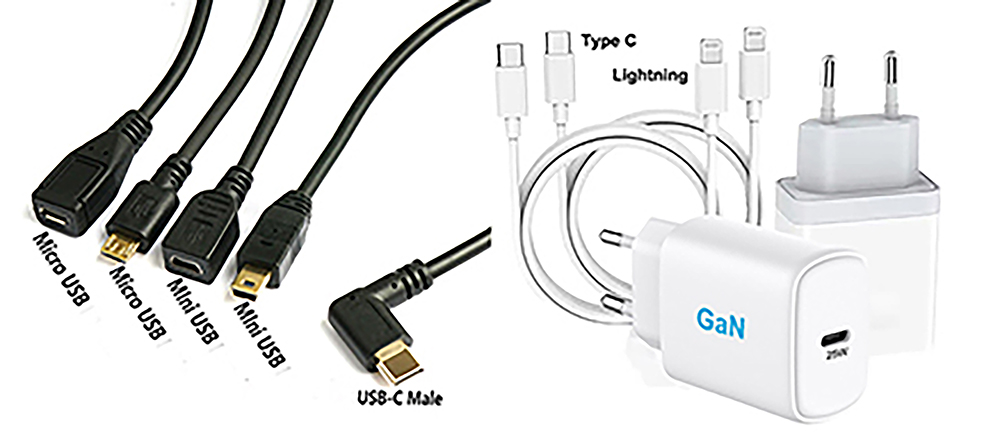USB-C vs USB-A vs USB-B: Which Connector Is Best for Your Devices?

What Are USB-A, USB-B, and USB-C?
Let’s break down each type:
USB-A: The Classic Standard
● Shape: Rectangular
● Usage: Widely used on computers, TVs, and power bricks
● Speed: USB 2.0 (480Mbps), USB 3.0 (5Gbps)
● Drawback: Non-reversible; slower data and power compared to USB-C
USB-B: Mainly for Printers & Older Devices
● Shape: Squarish with beveled corners
● Usage: Printers, scanners, and some industrial equipment
● Speed: USB 2.0 or USB 3.0 depending on version
● Drawback: Bulky; rarely used in modern consumer electronics
USB-C: The Future-Proof Champion
● Shape: Oval and symmetrical
● Usage: Phones, tablets, laptops, GaN chargers, power banks
● Speed: Up to 40Gbps (USB4), supports 240W PD charging
● Key Benefit: Reversible design, faster charging, and broader compatibility

Real-World Charging: USB-C Is the Future
If you're charging high-end devices like iPhones (with USB-C ports from iPhone 15 onwards), Samsung Galaxy phones, or MacBooks, USB-C is the clear winner. It supports:
· PD 3.1 protocol
· PPS fast charging for Androids
· GaN charger compatibility with power ranges up to 240W
✅ For OEMs and B2B buyers: USB-C helps future-proof your products and reduce inventory complexity.
Data Transfer Speeds Compared (2025 Update)
| Feature | USB-A | USB-B | USB-C |
| Reversible | ❌ | ❌ | ✔ |
| Max Power Delivery | ~15W | ~15W | Up to 240W (PD 3.1) |
| Max Data Transfer | 5Gbps (USB 3.2 Gen 1) | 480Mbps (USB 2.0) | Up to 40Gbps (USB4,TB4) |
| Video Output | ❌ | ❌ | ✔ (with adapters) |
| EU Regulation Ready | ❌ | ❌ | ✔ |
| Device Compatibility | Legacy only, PC, chargers | Printers/Scanners | All new laptops, phone, macbook, etc. |
Compatibility in Europe: What Matters in 2025?
With the EU’s USB-C mandate for small devices, USB-C has become the regional standard for smartphones, tablets, and handheld gaming consoles. Brands that don’t adapt face serious commercial restrictions.
Why it matters for B2B: Choosing USB-C in your product line ensures compliance and better market acceptance in Europe and South Korea.
USB-C in the Supply Chain: Benefits for Factories & Distributors
· Lower logistics cost: Universal cable = fewer SKUs
· Easier maintenance: Customers prefer one-cable solutions
· Better margins: High-power USB-C chargers (GaN 100W–240W) have greater profit potential
Should You Still Use USB-A or USB-B or USB-C?
· USB-A: Still relevant for low-power accessories or legacy systems
· USB-B: Only if you're dealing with niche industrial equipment
· USB-C: The best choice for future-forward fast charging and data transmission

Real-World Application: Choosing the Right Connector by Use Case
| Device | Recommended Port | Reason |
| Smartphones / Tablets | USB-C | Fast charging & data transfer |
| Laptops | USB-C | Supports PD, DisplayPort, more |
| Printers / Legacy Gear | USB-B | Still common in office equipment |
| Accessories (mice, ets.) | USB-A | Broad compatibility |
USB-B: Still Relevant ?
USB-B is mostly used in older printers, external hard drives, and industrial applications. It comes in various versions like Standard-B, Mini-B, and Micro-B, but they all share one thing in common: they are becoming rare in consumer devices. However, in B2B or factory-based equipment, you may still find them in use.
Pros:
·Rugged for specific industrial uses
·Stable in legacy environments
Cons:
·Not reversible
·Bulky and limited in data speed
·No future support in modern devices
Final Verdict: USB-C Leads, but A/B Still Have a Role
USB-C is the industry’s new standard for a reason: faster speeds, compact design, high-power delivery, and global adoption across industries. For modern manufacturing, electronics, OEM, and B2B supply chains—USB-C is essential.
While USB-C is undeniably the future of connectivity, USB-A and USB-B still play roles in specific applications.
Frequently Asked Questions
Q1: Is USB-C the only allowed port in Europe now?
A1: For smartphones, tablets, and small electronics – yes. The EU mandate requires USB-C for charging.
Q2: Can USB-C charge faster than USB-A?
A2: Yes, significantly. USB-C supports up to 240W through PD 3.1, while USB-A maxes out around 15W.
Q3: Do I need new cables for USB-C?
A3: Yes, to enjoy the benefits (e.g., 100W+ charging, 40Gbps speed), you need high-quality USB-C cables with the right certifications.